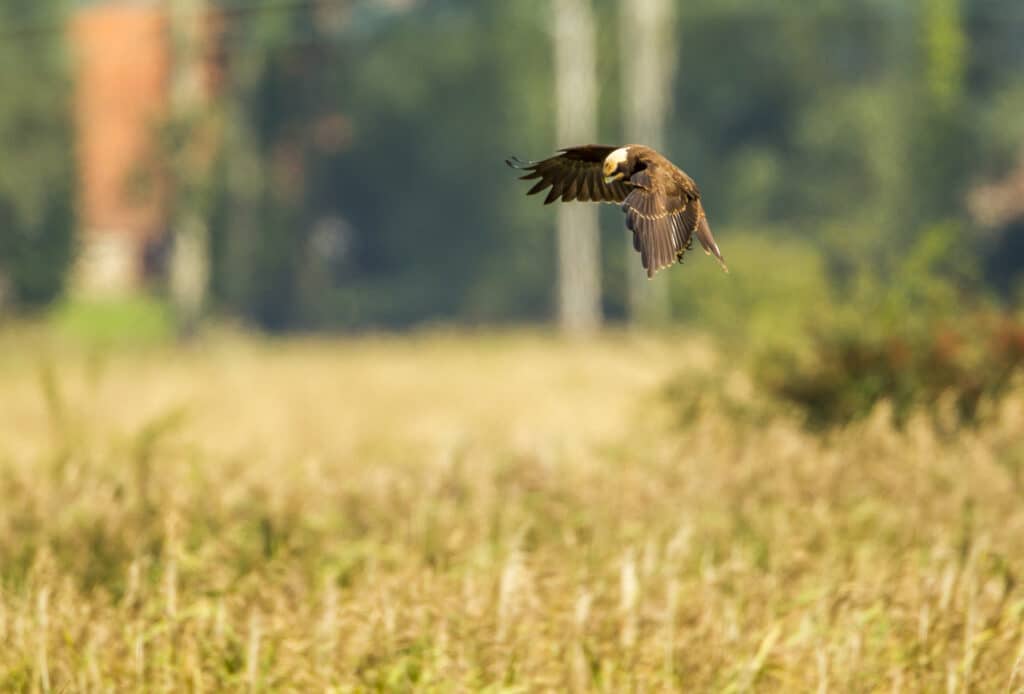Facts about the Marsh Harrier
Scientific name: Circus aeruginosus
Bird Family: Kites, hawks and eagles
UK conservation status: Amber
At a glance
- Nesting in reedbeds and marshes, this is the largest of the three harrier species breeding in Britain.
- Sexually dimorphic, females have distinctive yellowish heads and are sometimes known as 'cream crowns'.
- Just 600 pairs breed here, but some still shot or poisoned. Large numbers are shot on migration over Europe


Marsh Harriers are currently classified by the IUCN as ‘Least Concern’, but like many other birds of prey they have suffered persecution and were seriously affected by the effects of organochlorine pesticides such as DDT in the 1950s and 1960s which caused thinning of eggshells and a decrease in reproductive success. They almost died out as a British breeding species, but have recovered since the 1960s and changed behaviour with many individuals now remaining in Britain for the winter.
Living away from the typical landscapes most utilised by the shooting industry (lowland woodlands and upland moorlands) would suggest that direct persecution wouldn’t be an issue, but it does happen.
Recent incidents of criminality involving Marsh Harriers include:
- an adult female found shot next to a partridge release pen on an East Yorkshire shooting estate in September 2016.
- North Yorkshire Police investigating an incident in May 2017 when men dressed like gamekeepers and carrying shotguns fired shots at a pair of Marsh Harriers nesting on a grouse moor near Ilkley, in Wharfedale.
- A bird found shot (alive but later dying from its injuries) near Barton-Upon-Humber, North Lincolnshire in September 2018 (not far from where another was found poisoned in 2012).
- A female found shot near Scarborough, N Yorks in August 2019 (the bird was thought to have been shot on a nearby shooting estate and was rehabbed by Jean Thorpe and returned to the wild).
- And, on the Channel Isles, a bird found poisoned with rodenticide in early 2022 on Jersey.
As is often the case, the removal of just one of a nesting pair will result in a domino effect where any dependent chicks will die too. With around 600 pairs across the whole of the UK, every bird is critically important. Which made a reported discussion between the Moorland Association and Natural England in 2018 about licencing to kill Marsh Harriers on grouse moors all the more absurd, The Moorland Association disputed any conversation took place but a remarkable piece of detective work by Dr Ruth Tingay of Raptor Persecution UK seems to suggest otherwise. Given that Natural England have removed Hen Harriers from grouse moors and issued licences to kill Buzzards to pheasant breeders, it’s not difficult to accept that at the very least the subject has cropped up and may well crop up again.
Other current threats to Marsh Harriers in the UK include deliberate disturbance of nesting sites, poisoning and illegal egg collection. In Europe they are still shot too, most especially in Malta where large numbers of migrating Marsh Harriers are still regularly illegally shot by poachers.

